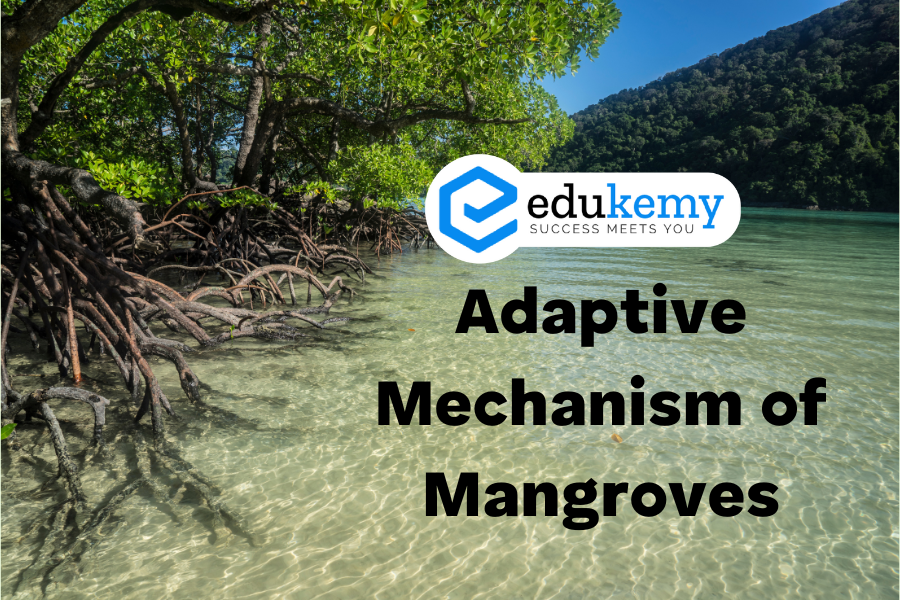Mangroves, the resilient coastal forests, possess a remarkable adaptive mechanism that enables them to thrive in some of the planet’s harshest environments. These unique ecosystems, found in tropical and subtropical regions worldwide, have evolved a suite of specialized adaptations to cope with the dynamic interplay of saltwater inundation, fluctuating tidal regimes, and nutrient-poor soils. At the heart of their adaptive prowess lies a sophisticated array of physiological, morphological, and ecological strategies finely tuned to the challenging conditions of the intertidal zone. From intricate root systems that stabilize sediment and facilitate gas exchange to salt-excreting glands that regulate internal salt levels, mangroves epitomize nature’s ingenuity in navigating the delicate balance between land and sea. Understanding the intricacies of their adaptive mechanisms not only illuminates the secrets of these vital ecosystems but also holds crucial implications for conservation and coastal management in the face of climate change and human disturbance.
- The mangrove environment is crucial and resilient.
- Mangrove species have evolved various adaptations to cope with challenging environmental conditions in diverse and effective ways.
Contents
- 1 FAQs: Mangrove Adaptations to Challenging Environments
- 1.1 1. What is the significance of the mangrove environment?
- 1.2 2. How do mangrove species cope with limited soil oxygen?
- 1.3 3. What is vivipary in mangrove reproduction?
- 1.4 4. How do mangroves ensure oxygen absorption in stilt roots?
- 1.5 5. Do breathing roots also provide mechanical support to mangrove trees?
- 1.6 6. Why is vivipary considered a unique reproductive method for mangroves?
- 2 In case you still have your doubts, contact us on 9811333901.
BREATHING ROOTS
- Oxygen is essential for the respiration of the underground tissues of any plant.
- Mangroves, facing a limited supply of oxygen in the soil, have adapted by extracting oxygen from the atmosphere. T
- hey employ specialized above-ground roots known as breathing roots or pneumatophores for this purpose.
- These roots feature numerous pores through which oxygen is absorbed into the underground tissues.
- In some instances, buttress roots serve both as breathing roots and as a means of providing mechanical support to the tree.
VIVIPARY
- Vivipary is an extraordinary reproductive strategy observed in mangrove species, and it is hypothesized to address the challenges posed by saline water, unconsolidated saline soil, and limited oxygen, which are typically unfavorable conditions for conventional seed germination and growth.
- This distinctive method involves seeds undergoing germination and transforming into seedlings while still attached to the parent tree.
- These nascent seedlings, commonly referred to as propagules, engage in photosynthesis while interconnected with the mother tree, receiving essential water and nutrients from it.
- Following a period of buoyancy, the propagules float in the water before eventually rooting themselves in suitable soil to continue their maturation process.
STILT ROOTS
- Stilt roots, observed in certain mangrove species, are a unique adaptation where roots emerge from stems and branches.
- Unlike conventional root systems, these specialized roots extend into the soil some distance away from the main stem, reminiscent of the aerial roots seen in banyan trees.
- Stilt roots are characterized by numerous pores through which atmospheric oxygen is absorbed, facilitating the respiration process within the roots.
- This adaptation allows mangrove species to effectively obtain oxygen from the air and contribute to their resilience in challenging environmental conditions.
FAQs: Mangrove Adaptations to Challenging Environments
1. What is the significance of the mangrove environment?
A: The mangrove environment is crucial due to its resilience and unique characteristics. Mangroves act as natural buffers against coastal elements and play a vital role in maintaining ecological balance along shorelines.
2. How do mangrove species cope with limited soil oxygen?
A: Mangrove species employ breathing roots or pneumatophores to extract oxygen from the atmosphere. These specialized roots have pores through which atmospheric oxygen enters the underground tissues, ensuring respiration in challenging soil conditions.
3. What is vivipary in mangrove reproduction?
A: Vivipary is a distinctive reproductive strategy observed in mangrove species. In this process, seeds germinate and transform into seedlings while still attached to the parent tree. These seedlings, known as propagules, engage in photosynthesis connected to the mother tree before eventually rooting themselves in suitable soil.
4. How do mangroves ensure oxygen absorption in stilt roots?
A: Stilt roots, observed in certain mangrove species, are specialized adaptations where roots emerge from stems and branches. Equipped with numerous pores, these roots absorb atmospheric oxygen, facilitating the respiration process within the roots and contributing to the overall resilience of mangrove species.
5. Do breathing roots also provide mechanical support to mangrove trees?
A: Yes, in some instances, breathing roots, particularly buttress roots, serve a dual purpose. They not only extract oxygen from the atmosphere but also provide essential mechanical support to the mangrove tree.
6. Why is vivipary considered a unique reproductive method for mangroves?
A: Vivipary is unique because it allows seeds to germinate and develop into seedlings while still attached to the parent tree. The nascent seedlings, or propagules, derive water and nutrients from the parent tree, enhancing their chances of successful establishment in challenging environments.
In case you still have your doubts, contact us on 9811333901.
For UPSC Prelims Resources, Click here
For Daily Updates and Study Material:
Join our Telegram Channel – Edukemy for IAS
- 1. Learn through Videos – here
- 2. Be Exam Ready by Practicing Daily MCQs – here
- 3. Daily Newsletter – Get all your Current Affairs Covered – here
- 4. Mains Answer Writing Practice – here

